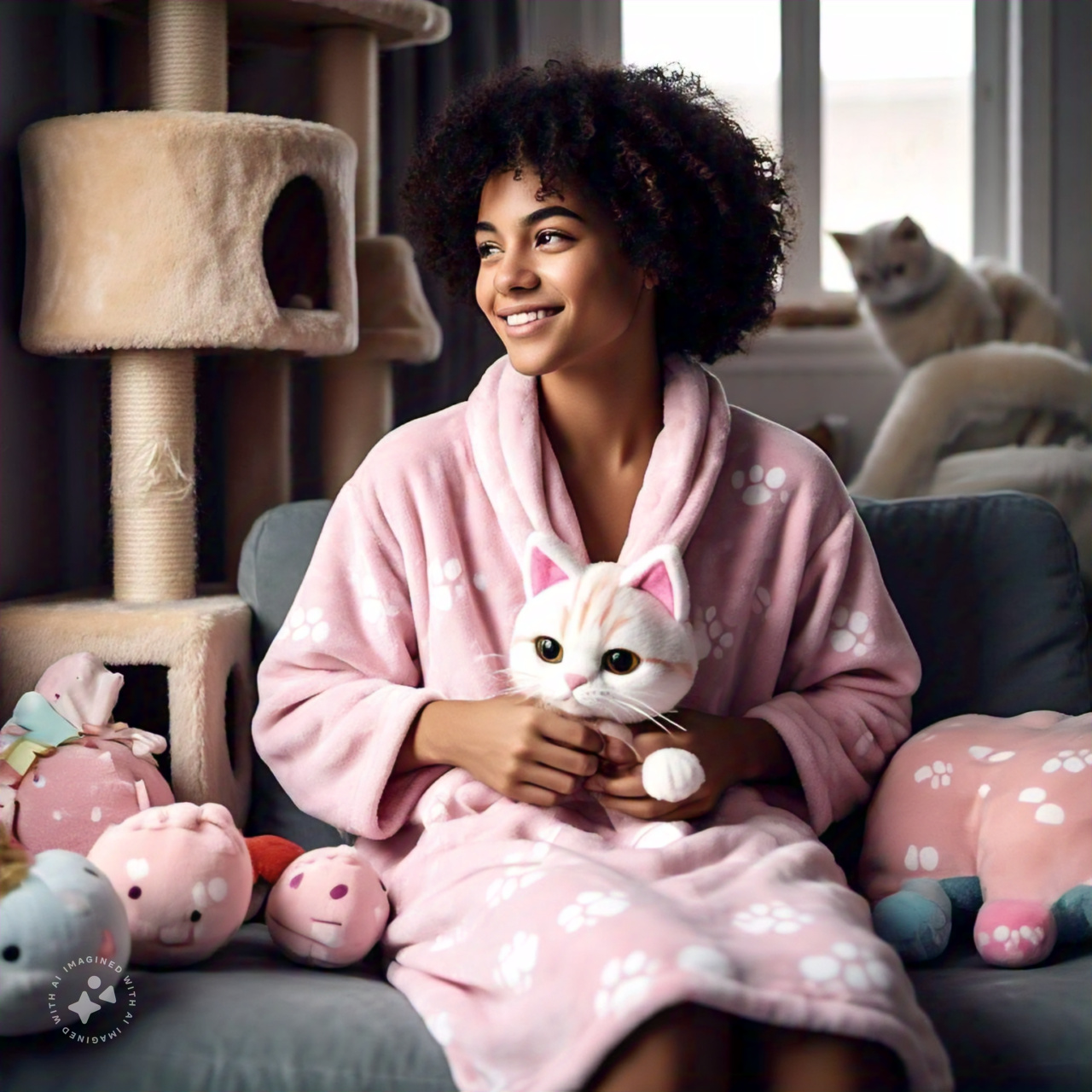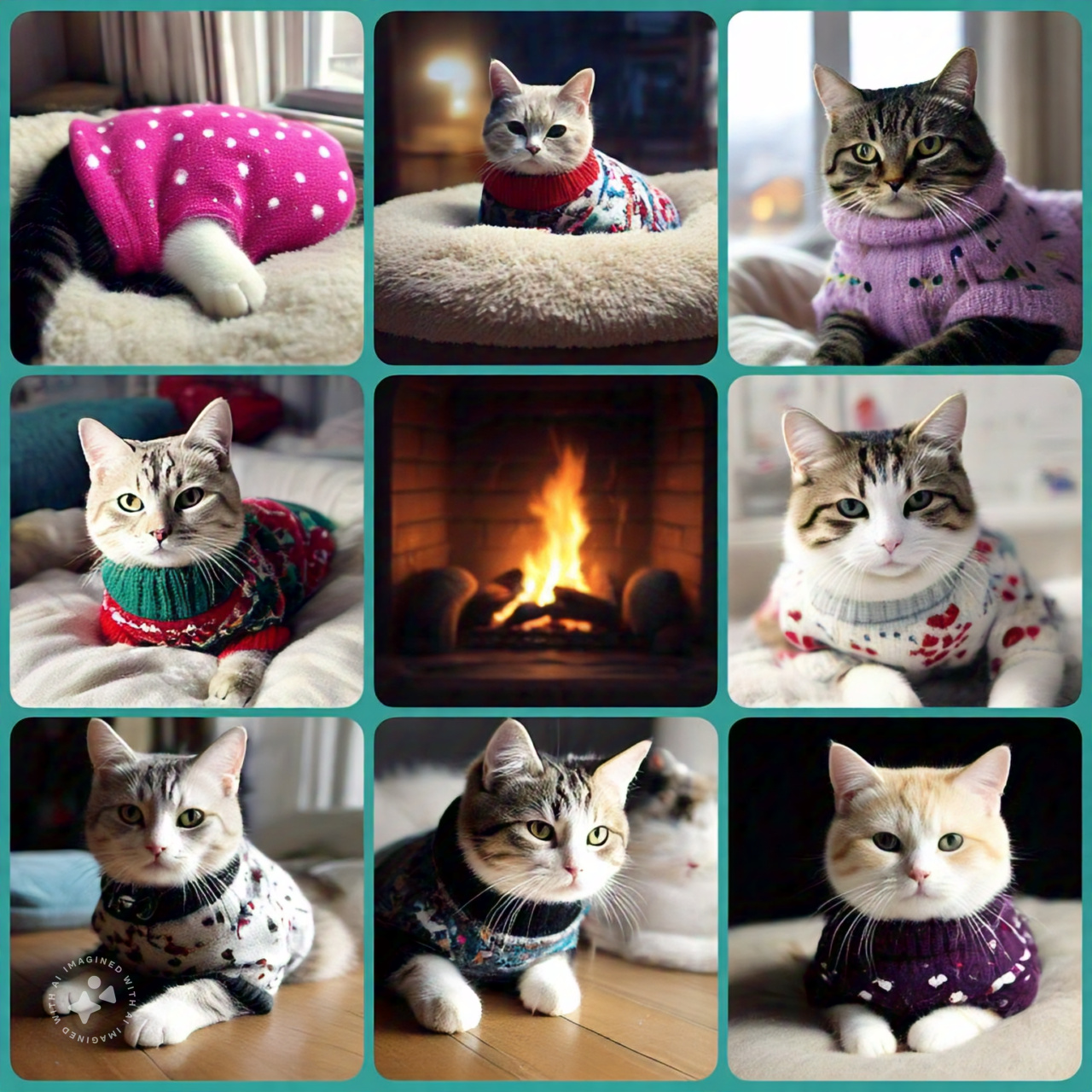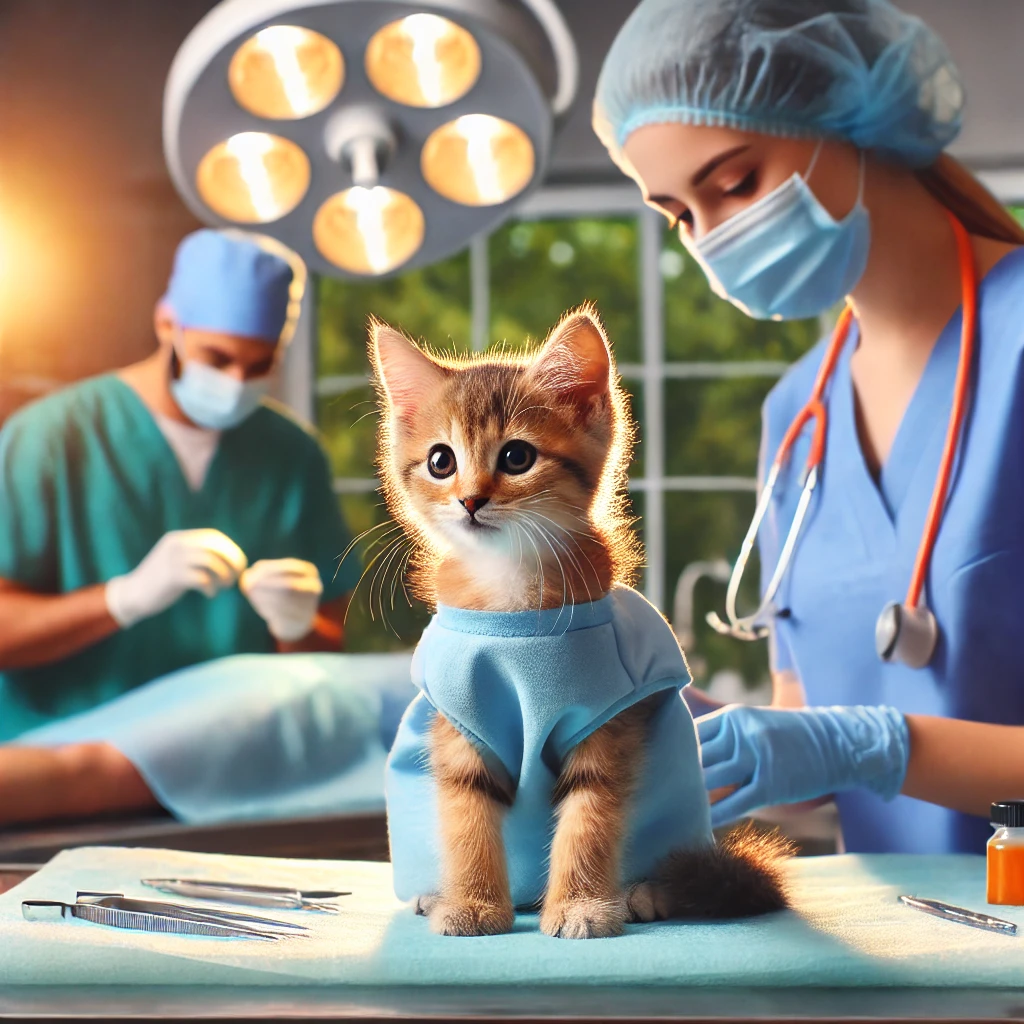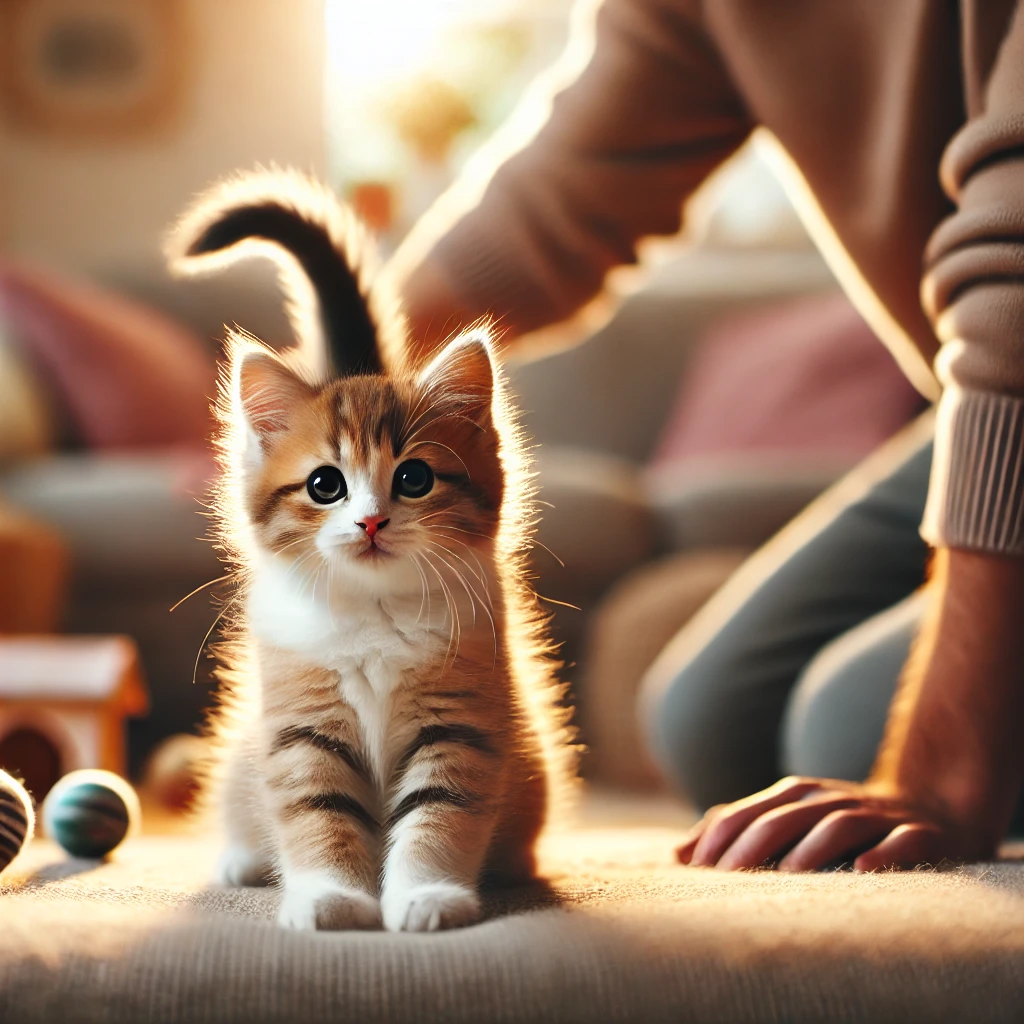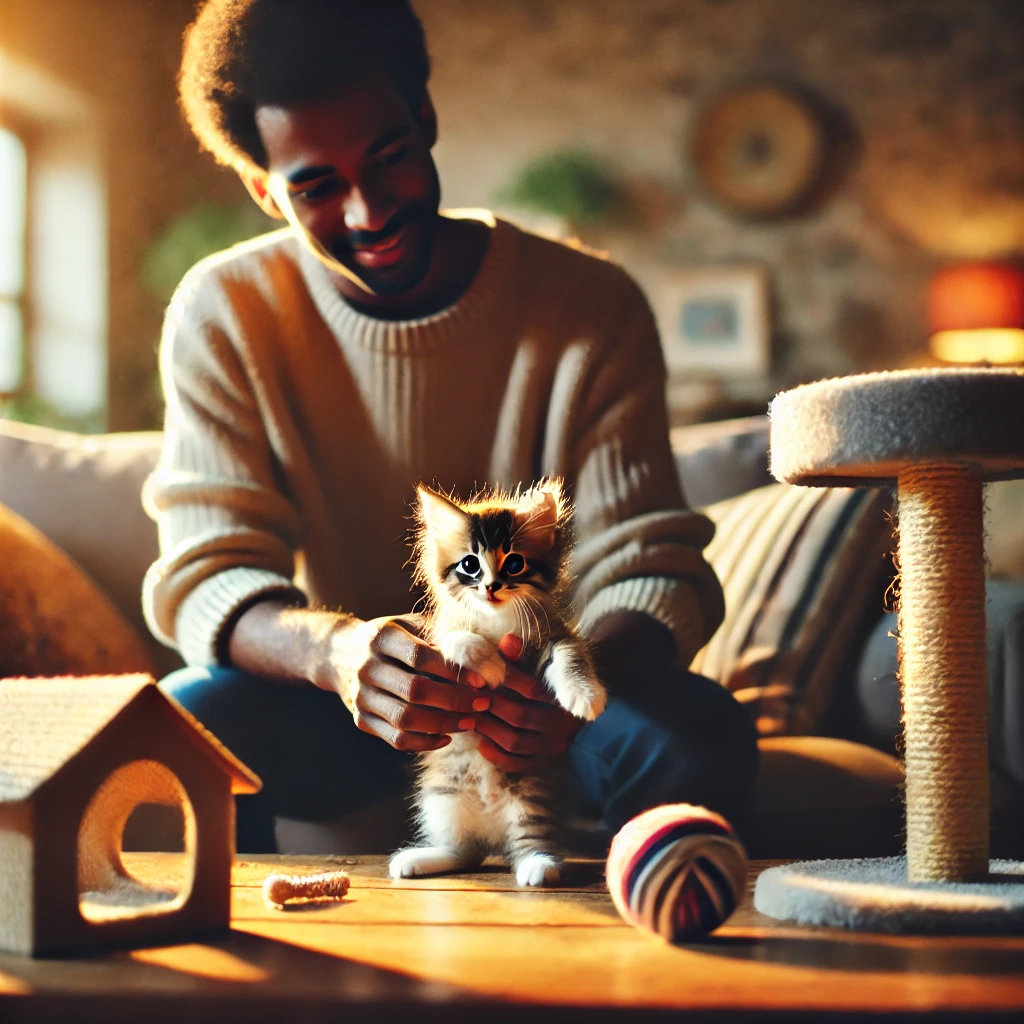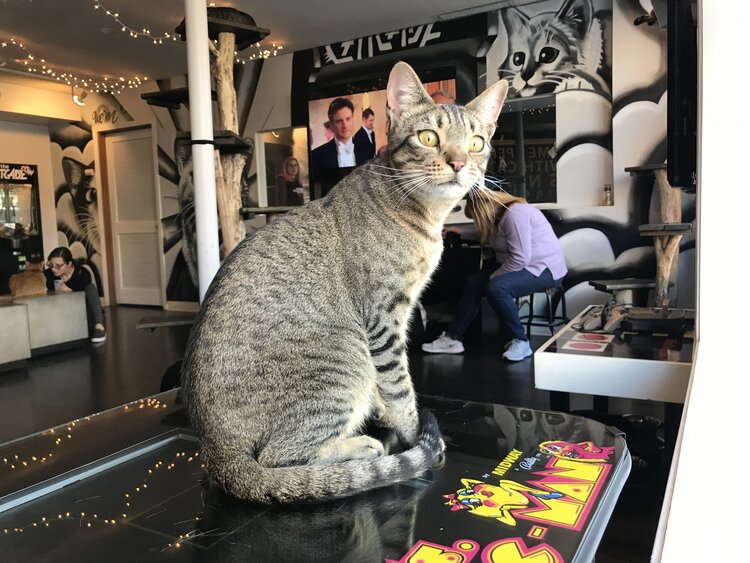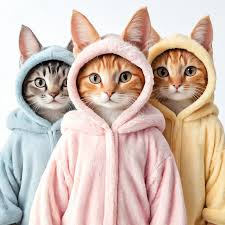Choosing the Perfect Cat Sweater: A Cat Owner’s Guide to Comfort and Style
Understanding Your Cat’s Needs
When it comes to choosing the perfect sweater for your cat, the primary goal should always be comfort. Cats, by nature, are creatures that are in tune with their physical needs, and ensuring they are comfortable in any attire is essential. However, there’s more to it than just picking a sweater that fits—several other factors come into play. These factors include the material, fit, functionality, and design of the sweater. Understanding these components is crucial for any cat owner who wishes to provide their pet with the best clothing option available.
Importance of Comfort
At the core of choosing the right sweater for a cat is comfort. A sweater that is too tight or too loose can make a cat feel restricted, stressed, or even frustrated. Cats value their freedom and tend to dislike clothing that impedes their movement. It’s important to find a sweater that fits snugly without being constrictive, allowing your cat to move freely while maintaining a comfortable level of warmth.
The fabric is a key component in this regard. Cats have sensitive skin, and certain fabrics can irritate their skin or cause discomfort. A soft and breathable material such as cotton, wool, or acrylic blends is often a good choice. These materials are gentle on the skin, easy to maintain, and provide sufficient warmth. Wool, for instance, is a natural insulator and can be beneficial for keeping your cat cozy during colder months, but it’s also essential to make sure that the wool isn’t too rough. Some cats have a lower tolerance for certain materials and may start scratching or showing signs of discomfort if they aren’t properly suited to the fabric.
How Size Affects Comfort
The fit of the sweater is another aspect that directly impacts comfort. Too tight, and the sweater can feel like a restriction, potentially causing anxiety. Too loose, and it might slip off or fail to provide adequate warmth. Finding a sweater that fits snugly, but not too tight, ensures that your cat will feel secure and comfortable.
Before purchasing a sweater, take measurements of your cat’s neck, chest, and length from the neck to the base of the tail. Using these measurements, you can compare them to size charts provided by manufacturers. It’s also important to note that many sweaters are designed to accommodate cats of different body shapes. Some cats are more barrel-chested or long and lean, so it’s crucial to find a sweater that caters to your cat’s unique body type.
Additionally, stretchy materials can be beneficial because they allow for some flexibility, adjusting to your cat’s movements. The last thing a cat owner wants is to see their pet struggling to move because their sweater is too stiff or restrictive.
Durability and Maintenance
When selecting a sweater for a cat, durability should be a consideration. Cats, especially those that are playful or curious, might tear or scratch at their clothing. Choosing a sweater made from durable fabric will ensure that it lasts longer. Fabrics like thick cotton or acrylic tend to hold up well over time, even with regular wear and tear. On the other hand, delicate materials like silk or fine wool may not withstand the rough playfulness of an active cat.
Ease of maintenance is also essential. Cats often groom themselves, and it’s inevitable that the sweater may get dirty from time to time. Sweaters that are machine washable and easy to care for will save owners the hassle of constant cleaning. A high-quality sweater made from easy-to-care-for materials will ensure that your cat looks stylish and stays comfortable without requiring constant upkeep.
When to Consider Special Features
Some sweaters come with additional features that might be beneficial for certain cats. For instance, some cat sweaters are designed with hoods or sleeves, providing extra coverage and warmth. A hood might be beneficial for cats that are sensitive to cold, as it helps cover their ears and head. Cats with longer fur or thinner coats may particularly benefit from additional warmth in these areas. However, not all cats enjoy hoods or sleeves, so it’s important to assess whether your cat would be comfortable with these added features.
Another feature to look for is stretchability. A sweater with added stretch will accommodate a wider range of movements, ensuring that your cat isn’t restricted when playing or running around. This flexibility can be especially important if your cat is an active breed or enjoys outdoor adventures.
Finally, consider the color and style of the sweater. While these aspects don’t affect comfort directly, they can contribute to the overall appeal. Some cats prefer simple designs that don’t distract them, while others might enjoy brighter, more vibrant colors. There’s no right or wrong when it comes to style, as long as the sweater aligns with your cat’s temperament and preferences.
Exploring Different Types of Cat Sweaters
Selecting the right type of sweater for your cat goes beyond simply considering the material and size. There are various styles and designs available, each tailored to specific needs or preferences. Understanding these different options can help you make a more informed decision when choosing the ideal sweater for your furry friend. In this section, we will take a closer look at the most common types of cat sweaters, including their specific benefits, and how to choose the best one based on your cat’s lifestyle, body type, and climate needs.
Pullover Sweaters
Pullover sweaters are among the most popular types of cat sweaters due to their simplicity and ease of use. These sweaters are typically made of stretchy materials like cotton or acrylic, making them comfortable for cats to wear. Pullover sweaters fit over your cat’s head and generally cover their neck, chest, and torso. This design is ideal for cats that tolerate clothing without the need for additional fastenings, such as buttons or zippers.
Benefits of Pullover Sweaters
One of the main advantages of pullover sweaters is their ease of use. Most cats find them less intimidating compared to more complicated sweaters that require fastenings or buttons. Additionally, pullover sweaters tend to be more form-fitting, which can provide a cozy and secure feeling. They are perfect for cats who don’t mind having something pulled over their head and prefer a more natural, snug fit.
Another benefit of pullover sweaters is that they are often more flexible, making it easier for cats to move around. The stretchy fabric allows them to comfortably run, jump, and play without feeling restricted. For cats with shorter or medium-length coats, pullover sweaters can offer just enough warmth to keep them comfortable during cooler weather.
Considerations for Pullover Sweaters
While pullover sweaters are ideal for many cats, they may not be the best choice for every pet. Cats with longer or thicker necks may find it more difficult to wear a pullover sweater because the neckline can sometimes feel restrictive. Additionally, some cats may feel anxious when their head is pulled through the opening, especially if they aren’t used to wearing clothing.
For these reasons, it’s important to monitor your cat’s behavior while wearing a pullover sweater. If they appear to be stressed or uncomfortable, consider switching to a different style or allowing them to get used to the sweater in a calm environment before wearing it outdoors.
Button-Up Sweaters
Button-up sweaters are another popular choice for cat owners. These sweaters are designed with fastenings along the chest or back, which allow for easy wear without having to pull the sweater over your cat’s head. Instead, you simply button or snap the sweater into place, offering a more secure fit for cats that may not tolerate pullover styles.
Benefits of Button-Up Sweaters
Button-up sweaters offer a level of convenience and comfort that makes them particularly appealing for certain cats. One key benefit is that they are often easier to put on, especially for cats who are nervous about having their head covered. The button closure makes the process less stressful, allowing the sweater to be slipped on and off without causing unnecessary anxiety.
Additionally, button-up sweaters are adjustable, meaning they can provide a more customized fit for your cat. The fastenings allow you to adjust the sweater’s tightness and ensure it stays secure while your cat moves around. This is especially useful for cats who may have slightly unusual body proportions or require a looser fit around the chest or neck.
Considerations for Button-Up Sweaters
While button-up sweaters are easy to use, they might not be the best option for cats who are overly active or tend to chew on objects. If the buttons are not securely fastened, your cat may try to pull them off or tear the fabric. Additionally, button-up sweaters can sometimes feel heavier or bulkier, depending on the material, which might make some cats feel constricted or uncomfortable.
When selecting a button-up sweater, ensure that the buttons are securely sewn into place and that the material is soft and lightweight to avoid unnecessary weight. It’s also a good idea to check that the buttons are designed to withstand any attempts your cat might make to bite or scratch them.
Sweaters with Sleeves
For cats who are particularly sensitive to the cold, a sweater with sleeves can provide extra warmth and protection. These sweaters cover the cat’s full body, including their legs, and often feature a turtleneck or high collar for added warmth around the neck area. Sweaters with sleeves are typically made from thicker materials like wool or fleece, making them ideal for colder climates.
Benefits of Sweaters with Sleeves
The primary advantage of sweaters with sleeves is their ability to provide full coverage, especially in colder weather. This makes them ideal for hairless cat breeds, such as the Sphynx, or short-haired cats who may feel chilly more easily. The additional coverage around the legs and neck can help keep your cat warm without exposing any part of their body to the cold.
For hairless or thin-coated cats, sweaters with sleeves can be particularly beneficial because they help regulate body temperature, preventing hypothermia or discomfort during winter months. These sweaters also tend to be snug and cozy, offering a sense of security for cats who enjoy warmth.
Considerations for Sweaters with Sleeves
While sweaters with sleeves offer excellent warmth, they may not be ideal for all cats. Some cats, especially those with longer legs or larger bodies, may find the sleeves restrictive or uncomfortable. Additionally, cats who are highly active or enjoy climbing may struggle to move freely in a sweater with sleeves. The sleeves can sometimes feel like a hindrance, limiting their mobility and causing stress.
It’s important to choose a sweater with sleeves that is made from flexible, breathable fabric to ensure that your cat can still move around comfortably. Some sweaters with sleeves also feature ribbed cuffs or stretchy openings to prevent the sleeves from becoming too tight or uncomfortable.
Fleece Sweaters
Fleece sweaters are incredibly popular among cat owners because of their warmth, softness, and breathability. Fleece is a synthetic fabric that is both lightweight and insulating, making it ideal for cats who need extra warmth without the heaviness of thicker materials like wool. Fleece sweaters are typically soft and plush, offering a cozy feel that most cats enjoy.
Benefits of Fleece Sweaters
The primary benefit of fleece sweaters is their warmth and insulation. Fleece retains body heat without becoming too heavy or bulky, making it an excellent option for cats who need a little extra warmth during the colder months. The fabric is also breathable, preventing your cat from overheating while still providing adequate warmth.
Fleece is also easy to care for, as it is typically machine washable and quick-drying. This makes it a convenient option for cat owners who want a low-maintenance sweater that still offers high levels of comfort.
Considerations for Fleece Sweaters
Although fleece is a great material for warmth, it may not be the best option for all cats. Some cats may have allergies to synthetic fabrics, and fleece may cause irritation or discomfort for those with sensitive skin. Additionally, fleece sweaters are typically designed for indoor use and may not provide enough protection if your cat spends a lot of time outdoors or in extreme cold conditions.
As with any sweater, it’s essential to check the fit and comfort level of the fleece sweater before purchasing. Ensure that the fabric is soft and breathable to prevent your cat from overheating.
Determining the Perfect Fit for Your Cat’s Sweater
Choosing the right sweater for your cat goes beyond selecting the style, color, and material. One of the most crucial factors that can affect how your cat responds to wearing a sweater is the fit. An ill-fitting sweater can cause discomfort, stress, or even restrict your cat’s natural movements. To ensure that your cat stays comfortable and happy in their new sweater, it’s important to understand how to measure your cat and choose a sweater that offers the perfect fit. In this section, we will explore the importance of fit, how to take accurate measurements, and how to adjust sweaters to suit your cat’s body type.
Why Fit Matters
The fit of a sweater can make or break your cat’s comfort. A sweater that is too tight can restrict movement, cause discomfort, and even lead to overheating. Conversely, a sweater that is too loose can slip off, not provide adequate warmth, or cause your cat to feel insecure. Cats are naturally sensitive creatures, and wearing clothing that doesn’t fit properly can create stress, making them more likely to resist wearing the sweater altogether.
Additionally, an ill-fitting sweater may rub or chafe against your cat’s skin, leading to irritation. Cats with longer coats may be particularly sensitive to seams or tight bands that dig into their fur. The right sweater will allow your cat to move freely and comfortably while offering warmth and protection without causing discomfort.
Taking Accurate Measurements
To determine the best fit for your cat, it’s essential to take accurate measurements. The most important measurements to consider are the neck, chest, and length of your cat. These measurements will help you choose a sweater that fits snugly but comfortably.
- Neck Measurement The neck measurement is important for ensuring that the sweater fits around your cat’s neck without being too tight or too loose. Using a soft, flexible measuring tape, measure around the base of your cat’s neck, where a collar would naturally sit. Be sure to leave enough space for comfort—aim for a measurement that is snug but not constricting.
- Chest Measurement The chest is typically the widest part of your cat’s body, and it is crucial to ensure that the sweater accommodates this area. Measure around the fullest part of your cat’s chest, just behind their front legs. This measurement should allow for some breathing room, as a tight chest area can make your cat feel restricted.
- Length Measurement To measure your cat’s length, start from the base of the neck (where the collar would sit) and measure all the way to the base of the tail. This will give you an idea of how long the sweater should be to cover your cat’s torso appropriately. Some sweaters are designed to cover the entire length, while others may only provide partial coverage, so it’s important to take note of your cat’s body type when choosing the sweater length.
Choosing the Right Size
Once you have the measurements, compare them to the size charts provided by the manufacturer of the sweater. Different brands may have slightly different sizing conventions, so it’s crucial to check the chart specific to the brand you’re considering. Generally, most size charts will list options such as small, medium, large, or extra-large, along with corresponding measurements for neck, chest, and length.
Keep in mind that sizing can vary depending on the type of sweater. For example, sweaters with more stretch, such as cotton or acrylic pullovers, may have more flexibility in terms of size, whereas stiffer materials may require a more precise fit. If your cat’s measurements fall between two sizes, it’s often a good idea to size up, as a slightly larger sweater will be more comfortable than one that is too tight.
Adjusting the Sweater for a Better Fit
Even after selecting a sweater based on the manufacturer’s size chart, it’s possible that some adjustments may be necessary to ensure a perfect fit. Many sweaters come with built-in adjustable features, such as velcro straps, elastic bands, or drawstrings. These features allow you to fine-tune the fit to suit your cat’s body type more comfortably.
If your cat is between sizes or has an unusual body shape, you may also want to look for sweaters that offer flexibility in fit. Some brands offer sweaters with stretchy panels or adjustable necklines, which can help accommodate a variety of body shapes without compromising comfort.
For cats with particularly long bodies or deeper chests, consider choosing a sweater that is specifically designed for these features. Some brands create sweaters with added length or a more generous chest area to ensure a better fit. If you can’t find a sweater that fits perfectly, a simple sewing alteration might be all that’s needed to adjust the fit. Be cautious, however, when making any alterations, as the fabric’s stretch and comfort could be affected.
Testing the Fit
Once you’ve selected and adjusted your cat’s sweater, it’s time to see how well it fits. Put the sweater on your cat and observe how they move and behave. The sweater should stay in place without slipping off or riding up. Your cat should be able to move freely without showing signs of restriction, and they should not display any signs of discomfort, such as scratching or trying to remove the sweater.
Make sure the sweater doesn’t impede your cat’s range of motion. They should be able to walk, run, and jump without feeling hindered by the clothing. Also, check for any areas where the sweater may be too tight, such as around the neck, chest, or legs. If the sweater seems to be digging into your cat’s skin, consider adjusting it or trying a different size.
Additionally, monitor your cat’s behavior when they first wear the sweater. Some cats need time to adjust to the sensation of wearing clothes, and it’s normal for them to act a bit uneasy at first. Give your cat plenty of time to get used to the sweater in a calm environment, and avoid forcing them to wear it for extended periods right away. Gradually increasing the amount of time your cat wears the sweater will help them become more accustomed to it.
Key Considerations for Different Cat Body Types
Just as cats come in a variety of shapes and sizes, different body types will require different approaches when choosing a sweater. It’s important to consider your cat’s unique features and adjust the fit accordingly.
- Short-Haired Cats Short-haired cats typically have a leaner body with less insulation from fur, which makes them more susceptible to cold. For these cats, a snug, stretchy sweater that offers warmth without bulk is ideal. A well-fitting pullover or button-up sweater made from soft fabrics like cotton or fleece will provide the right balance of warmth and comfort.
- Long-Haired Cats Long-haired cats have more fur to keep them warm, but they may still benefit from a sweater during colder months. It’s essential to choose a sweater that doesn’t interfere with their fur. A looser fit or a sweater with more flexibility will ensure that the clothing doesn’t disrupt the natural flow of their coat. Sweaters with sleeves may be less suitable for these cats, as they could become tangled in the fur.
- Hairless Cats Hairless cats, such as the Sphynx, are particularly sensitive to temperature fluctuations and require extra protection from the cold. Sweaters with sleeves or full-body coverage are ideal for these cats, as they help maintain body temperature. Look for sweaters made from thicker materials, such as wool or fleece, to provide maximum warmth. Ensure that the sweater fits snugly without restricting movement, and avoid any sweaters with rough seams that could irritate their sensitive skin.
- Large-Bodied Cats For cats with larger bodies, such as Maine Coons, you may need to choose a sweater that offers extra room around the chest and torso. These cats may have a broad chest or long limbs, so it’s important to ensure that the sweater accommodates their body size. A button-up or adjustable sweater might be a good option, as it allows you to customize the fit.
- Small or Petite Cats Smaller cats may require a more form-fitting sweater to ensure that it stays in place. Sweaters designed for smaller breeds will typically offer a more tailored fit, preventing the sweater from slipping off. Pullover sweaters are a great choice for petite cats, as the snug fit will keep them warm and cozy without excess fabric.
Helping Your Cat Adjust to Their New Sweater
Introducing a cat to a new sweater can sometimes be a challenge. While some cats may take to their new attire immediately, others may need time to adjust. Cats are creatures of habit, and any change in their routine can cause them to feel uncertain or stressed. However, with patience and the right approach, most cats can learn to enjoy wearing a sweater. In this section, we will explore strategies for introducing your cat to their sweater, ensuring that the experience is as comfortable and stress-free as possible.
Gradual Introduction: Patience is Key
The key to getting your cat accustomed to wearing a sweater is to take things slowly. Rushing the process can cause your cat to become stressed or anxious, leading them to associate the sweater with negative experiences. Instead, allow your cat to gradually acclimate to the idea of wearing clothing.
Start by introducing the sweater in a calm and quiet environment. Place the sweater near your cat’s favorite resting spot so that they can get used to its presence without any pressure. Allow your cat to sniff, paw at, and explore the sweater on their own terms. Over time, they will become more familiar with it, and this will reduce any initial hesitation.
Positive Reinforcement
Cats respond well to positive reinforcement, so use this technique to help them associate the sweater with good things. Start by rewarding your cat with treats, praise, or affection every time they show interest in the sweater or allow you to touch it. The goal is to make the sweater a positive part of their routine, rather than a source of stress.
Once your cat is comfortable with the sweater’s presence, you can move on to putting it on. Be sure to do this slowly and gently. Begin by placing the sweater on their back for a few seconds, and then remove it. Gradually increase the time your cat wears the sweater, rewarding them with treats or affection after each successful attempt.
Avoid Forcing the Sweater On
It’s essential not to force the sweater onto your cat if they are resisting. Forcing the sweater on can cause fear and anxiety, making them associate the sweater with discomfort. Instead, give your cat plenty of time to adjust to the idea, and always allow them the option to remove the sweater if they become too agitated.
If your cat becomes particularly stressed when wearing the sweater, it’s best to remove it and try again at a later time. You can also break the process into smaller steps. For example, if your cat is reluctant to have the sweater put over their head, try placing the sweater on their body without putting it over their head at first. Gradually, they may become more comfortable with the sensation of wearing the sweater, and eventually, they’ll be more willing to wear it fully.
Timing and Environment
Choosing the right time and environment to introduce the sweater can make a big difference in how well your cat adjusts. It’s best to choose a calm, relaxed environment where your cat feels safe and comfortable. Avoid dressing your cat during stressful situations, such as when they are hungry, tired, or when there are loud noises in the background. A quiet, relaxed time of day—such as after a meal or during playtime—will be the most conducive to successful sweater introduction.
Start by placing the sweater on your cat during short periods and gradually increasing the time they wear it. Allow your cat to roam freely while wearing the sweater so that they don’t feel restricted or confined. Be sure to supervise your cat closely while they are wearing the sweater to ensure they don’t try to remove it or become tangled in the fabric.
Make It Part of Their Routine
Once your cat becomes accustomed to wearing the sweater, incorporate it into their daily routine. You can make it a part of their regular playtime, grooming sessions, or relaxation time. Consistency will help your cat become more comfortable with the sweater over time. Regularly dressing your cat in their sweater can also help them associate it with fun and positive experiences.
Additionally, be mindful of the temperature and your cat’s comfort when they are wearing the sweater. If the weather warms up or your cat starts showing signs of overheating, remove the sweater promptly. Conversely, on cold days or during chilly evenings, encourage your cat to wear the sweater for longer periods.
Watch for Signs of Discomfort
While many cats can become comfortable wearing sweaters, it’s important to watch for signs that they may be experiencing discomfort. Cats are excellent at hiding pain or stress, so be vigilant and look for any subtle signs that might indicate discomfort or distress. These signs may include:
- Excessive scratching or biting at the sweater
- Panting or rapid breathing, especially if the weather is warm
- A lack of movement or reluctance to walk, jump, or play
- Hiding or withdrawing from interactions
If you notice any of these signs, remove the sweater immediately and assess the situation. It may be that the sweater is too tight, too heavy, or made from a material that irritates your cat’s skin. In such cases, it’s a good idea to try a different style or material. If your cat continues to show signs of distress, consult your veterinarian to rule out any underlying health concerns.
What to Do If Your Cat Still Doesn’t Like the Sweater
In some cases, no matter how slowly you introduce the sweater or how many positive reinforcements you use, your cat may simply refuse to wear it. While most cats will eventually adjust to wearing a sweater, some may never be fully comfortable with the sensation of clothing. If your cat shows persistent resistance, it’s important to respect their preferences.
There are alternative options for keeping your cat warm and comfortable during cold weather. For instance, a cozy bed or blanket, heated cat pads, or even a pet-safe heating element can provide warmth without the need for clothing. It’s also possible to use pet-safe coats or jackets that don’t cover as much of your cat’s body but still provide protection from the cold.
Monitoring Your Cat’s Behavior with the Sweater
As your cat adjusts to wearing their sweater, continue to monitor their behavior and ensure they are comfortable. Look for any changes in their posture or activity levels. A happy cat should be able to play, eat, and move freely while wearing their sweater. If they appear content and calm, this is a good sign that the sweater is not causing them any undue stress.
Don’t be discouraged if it takes some time for your cat to adjust. Patience is key when it comes to dressing a cat, and with positive reinforcement and gradual exposure, most cats will eventually come to enjoy their sweaters as part of their routine.
Introducing your cat to a sweater can be a gradual process, but with patience, positive reinforcement, and careful monitoring, your cat can eventually learn to enjoy wearing their sweater. By starting with a gentle introduction, respecting your cat’s boundaries, and making the experience positive, you can ensure that your cat feels comfortable and secure in their new attire. Whether they’re wearing their sweater for warmth or style, your cat will appreciate the extra care and attention you’ve put into selecting and introducing them to their new clothing. With time, a well-fitting sweater can become a regular part of your cat’s wardrobe, keeping them cozy and stylish through every season.
